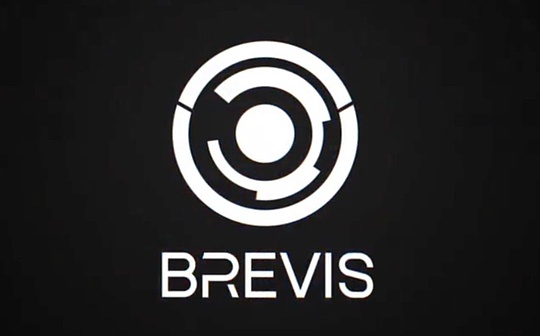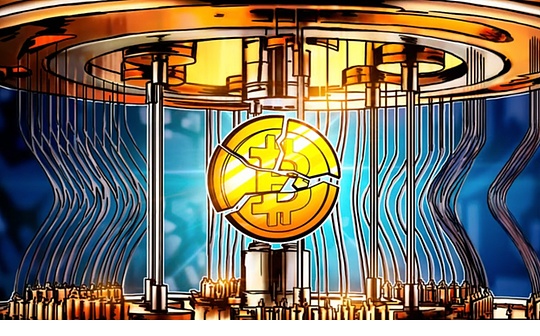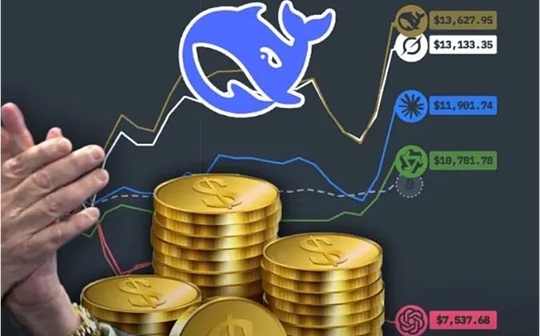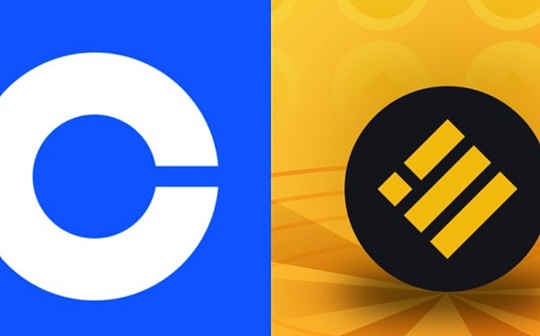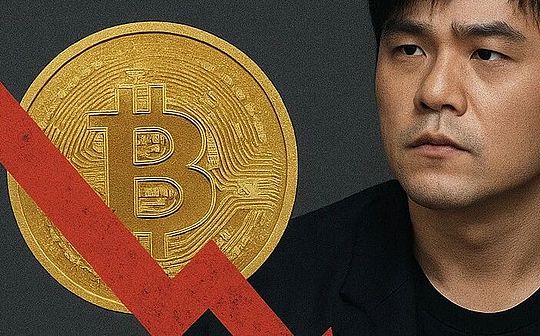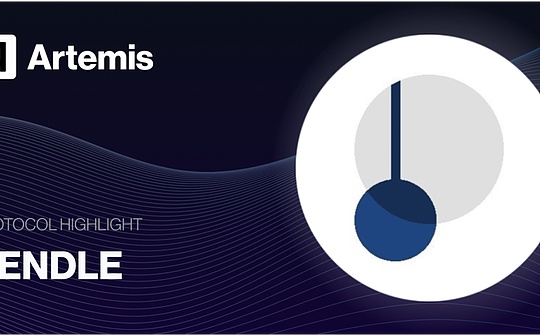
Author: Jonathan Ma, founder of Artemis; Translation: Bitcoin Vision xiaozou
Recently we interviewed Pendle founder TN Lee.Pendle has become one of the fastest-growing fixed income and income trading protocols in the DeFi field. Its total lock-up value TVL has exceeded billions of dollars, and stablecoins account for 80% of super liquidity.By splitting assets into principal tokens PT and income tokens YT, Pendle has built a two-sided market that satisfies both risk-averse investors pursuing certain returns and risk-seeking traders pursuing points and excess returns.
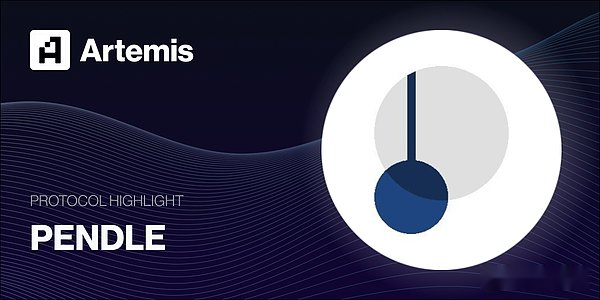
This article will provide an in-depth analysis of Pendle’s development history, future opportunities, and strategic layout on how to seize the US$140 trillion global fixed income market.
1,HelloTN!PendleFounded in2020Year.Can you share your entrepreneurial story with us?You createdPendleWhat is the original intention?
The idea of Pendle was born in the DeFi summer of 2020.At that time, liquidity mining was at its peak, and three-digit or even four-digit annualized returns were commonplace, but these returns often only lasted for days or even hours.This got us thinking: Can these high returns be locked in?So we decided to build a protocol that makes DeFi fixed income a reality.This idea becomes even more significant when you realize that the global fixed income market is actually the largest securities market in the world.
2, in my impressionPendleI initially participated last year.EigenlayerandEthenaThe main avenue for income farming.Please explain it to everyone in plain languagePendleThe nature of and how users should use itPendle?
Pendle is essentially a yield trading protocol.To put it simply, we allow users to trade the “income rights” of assets. The income here covers all receivable rights and interests generated by the assets, including regular income and point rewards.The way to achieve this is to strip the income and points generated by assets into independent assets – income tokens (YT), and the remaining principal corresponds to principal tokens (PT).
If you are optimistic about the future income and points generated by an asset, you can buy YT.If the judgment is correct, profit will be realized when the accumulated income value of YT exceeds the purchase cost.
For users who are pursuing stable income, they can purchase PT at a discount to obtain a fixed annualized income, which is equivalent to buying assets at a discount and profiting from the price difference.
In addition to earning income, Pendle also provides opportunities to participate in various popular DeFi protocols, and users can choose the most suitable investment portfolio based on their own risk preferences.
3,PendleWhat is the business model?PENDLEWhat value do token holders receive?
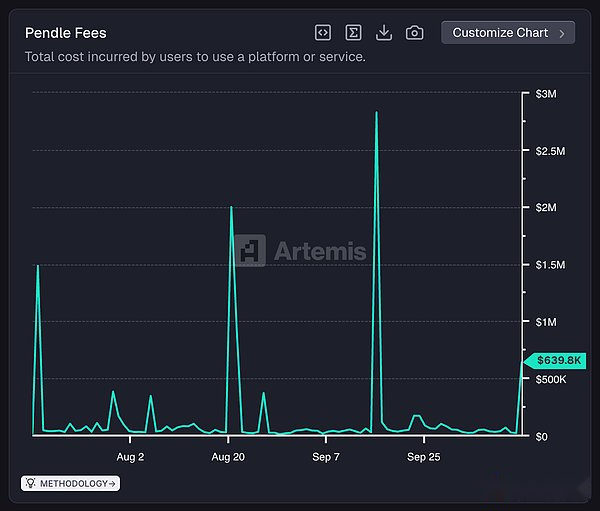
Pendle’s profit mainly comes from two major sources: exchange fees and revenue commission.Simply put, the higher the transaction volume and Total Volume Locked (TVL), the more revenue the protocol earns.Part of the revenue commission will also be distributed to vePENDLE holders in the form of points or airdrops.
4, the current market pairPendleWhat’s the biggest misconception?
I think it is the perception that “it is very difficult to list coins on Pendle”.Listing on Pendle is actually very simple, especially now that we have established a community-driven pool deployment process.This is also the main reason why a large number of new markets have emerged for Pendle recently, especially interest-bearing stablecoin projects such as Gaib and USDai.
If you are a DeFi project that can generate any form of income/points, listing assets on Pendle is actually very straightforward.
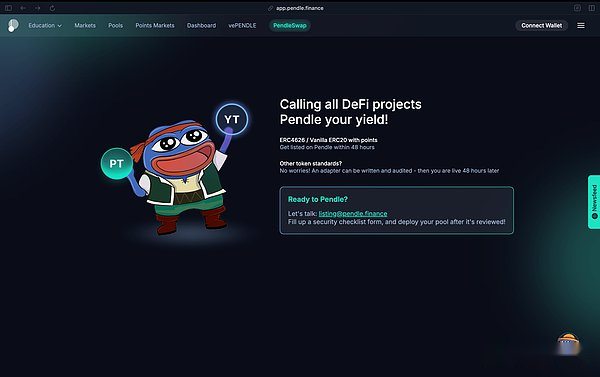
5,Modular CapitalofJames HoandSpartan GroupofJose SanchezAll generalsPendleConsidered the core winner of the stablecoin track.Why stablecoins can dominatePendleTotal locked amount78%share?what do you thinkPendleFuture opportunities in the stablecoin space?
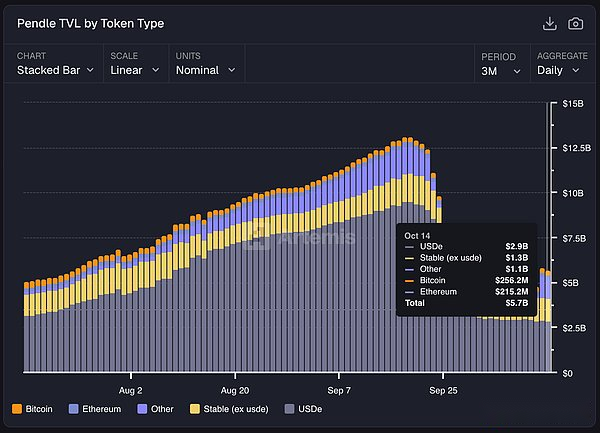
I believe this success can be attributed to stablecoins being the main narrative driver in the current market.Looking back, when Eigenlayer and re-staking became the dominant narrative, our TVL was mainly composed of staking-related assets and was mostly denominated in ETH.Then we saw the rise of the BTCFi narrative, led by Babylon and its derivatives. Our TVL naturally followed the trend, and the proportion of BTC assets increased significantly.
Now that stablecoins have become the focus of the market, our TVL also shows the same pattern.Pendle’s core advantage lies in its design structure and infrastructure that can quickly adapt to various market narratives and trends.As long as the asset can generate income, it can be reconstructed through “Pendleization”.
6,rightPendleWhich indicators are the most critical?How much weight does fundamental analysis play when communicating with investors and circulating token funds?
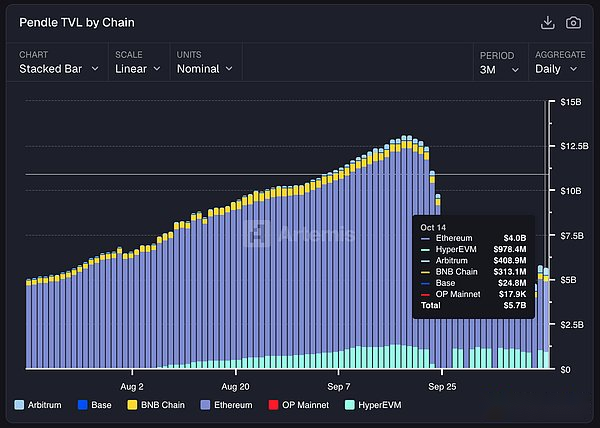
TVL and transaction volume are core indicators. They directly contribute to protocol revenue and are key considerations when we talk to investors and circulating token funds.Market narratives will change with cycles, but these fundamental indicators will always be the core indicators for evaluating our performance over the long term.
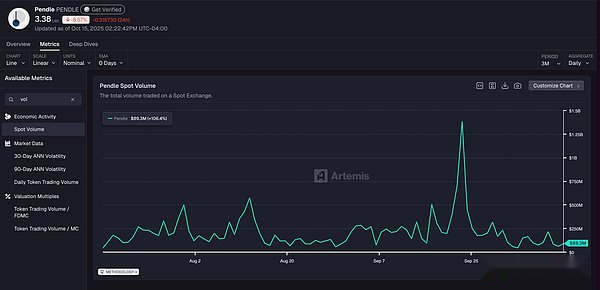
For large investors and circulating token funds, trust is crucial, and these indicators are a quantitative reflection of trust in the protocol.The longer we maintain metric growth, the higher the trust value accumulated by the protocol.
7, please talk aboutPendleFuture development roadmap?
we have this yearThree core goals:
first isBoros, this is our new trading platform with leveraged income.The core design goal of Boros is to handle various income sources, covering not only DeFi income, but also off-chain traditional financial income such as mortgage interest rates.Initially we will focus on an area that is more direct and familiar to the market: perpetual funding rate trading.Only two months after its launch, Boros has shown strong growth momentum, with transaction volume growing 10 times that of the V2 version, and nominal transaction volume exceeding US$1.8 billion.Even at this growth rate, we currently only cover about 0.03% of the total addressable market, and there is still huge room for growth in terms of the sustainable funding rate track alone.
followed byCitadelsplan to optimizePTcirculation ecology and build an independent economic system——Especially after PT’s recent historical peak of US$2 billion in the lending market, it is even more important.Currently, fixed-income PT mainly exists in the EVM ecosystem. Through Citadels, we will expand to institutional investors who require KYC, Islamic-compliant funds, and even non-EVM chains such as HYPE, TON, and Solana.Each direction is a “fortress” we want to build. This is an important step for Pendle to achieve the full popularity of fixed income.
Finally, as we enter a new phase of growth, Pendle V2 will evolve to be permissionless.As mentioned before, the process of listing assets on Pendle has become easier than ever.
8, in the long run, to2030years later,PendleWhat major development opportunities may come?
Our vision for Pendle is quite ambitious – we hope to enable all types of income to be traded on Pendle, not only in the DeFi field, but also covering all types of income assets around the world.Our goal is to create a yield trading market that becomes the go-to platform for top-tier yields, whether they originate from DeFi, CeFi or traditional finance.
We firmly believe that the most impactful blockchain applications are those that solve real-world problems more effectively than traditional financial solutions.This is exactly the standard set for Pendle.
From a data perspective, the market opportunities are huge: the global fixed income market is approximately US$140 trillion, making it the largest securities market in the world.The demand for fixed income products is not hypothetical; it is a well-established market.However, there is currently a lack of a unified platform that can seamlessly integrate all kinds of income on and off the chain. This is the market gap that Pendle wants to fill.
9,PendleWhat are the biggest risks and challenges facing your future success?
The core challenge we currently face is to break through the limitations of the “on-chain model”.Pendle has established solid product-market fit in the crypto-native ecosystem, but to truly scale and become a global revenue layer, it must build the infrastructure that can push Pendle products beyond the boundaries of Web3.
This means establishing appropriate channels to package and promote these products in a way that traditional finance can understand.What follows is a series of new topics – regulatory compliance, KYC certification, legal structure, asset custody, etc.These are important building blocks for achieving real-world adoption and attracting outside institutions/funds/customers.
We are in active discussions with a number of potential partners to break through these barriers.At the same time, we will work closely with the Ethena team to explore specific ways to connect our infrastructure to the broader financial world.Although this is a multi-dimensional and complex challenge, it is also our most exciting frontier battlefield.Once we break through, we will open up a far greater development space than DeFi.
10,WhyDeFineedPendleSuch financial products?
Before the emergence of Pendle, the DeFi field actually lacked a way for users to reliably obtain fixed income exposure. This was a huge market gap.Fixed income is a core component of any mature financial system – it allows investors to maintain and grow value in a predictable manner.This type of product can naturally attract a different user group than typical DeFi speculators: mature investors tend to have more sophisticated considerations about risks, rather than blindly chasing high annualized returns.
We have witnessed this trend firsthand: despite the potential upside of future earnings and airdrops, a large portion of PT trading volume comes from eight to nine-figure whale users locked in fixed income.From a risk-return perspective, the reliability and predictability of fixed income have irreplaceable advantages.
As a yield trading marketplace, Pendle enables true price discovery for the yield curve in the crypto space.It helps establish the term structure of interest rates, which is like the role of traditional financial Chinese bonds and has important indicative significance for the broader DeFi financial market.
In addition, with the rise of points and airdrop mining, Pendle has evolved into a form beyond a simple income platform.It has become a democratized “early investment” platform, allowing retail investors to deploy emerging protocols in advance through channels that were previously limited to insiders or venture capital.This functional layer is very attractive and highly consistent with our goal of building a more open and inclusive revenue market.
11,PendleHow is it unique compared to earlier projects trying to build similar protocols?
I think the key differentiator is our ability to identify and adapt to emerging narratives and market trends.Looking at the evolution of Pendle’s TVL composition, you will find obvious phase changes: early liquidity was highly concentrated in ETH (especially in the LST and LRT stages). With the rise of BTCfi, our liquidity allocation has also naturally shifted.
Nowadays, the proportion of stablecoins has exceeded 78% of TVL, which is actually a healthy signal – unlike speculative assets, the demand for stablecoin income has cross-cyclical resilience.Regardless of the bull or bear market, the market’s demand for stable and predictable returns will always exist, especially among wealth preservation users.
This agility to adjust to market dynamics is our core strength.It’s this ability that allows us to continue to remain relevant and grow through different narrative cycles.
12,PendleWhat does a typical user profile look like?
Although it sounds like a cliche, Pendle does provide value to all types of users:
If you prefer conservative and stable income, the fixed income provided by the principal token PT perfectly meets the needs of wealth preservation and planning;
If you have a high risk tolerance and want to leverage your favorite protocols (especially to maximize airdrop potential or future returns), the yield token YT is the ideal tool;
If you are between the two or want to take care of both, as a liquidity provider LP can not only obtain fixed income, but also share the upside potential of income and points.
PendleData in-depth analysis
As of2025Year9moon, Pendle’s total lock-up value TVL breaks through130billion US dollarspeak value, whereUSDeThe highest proportion (approximately80billion U.S. dollars), the rest is made up of other stablecoins, BTC and ETH.
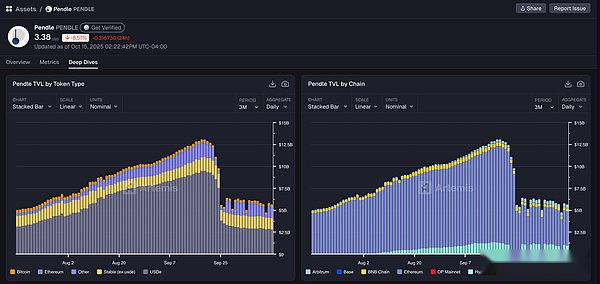
Pendle’s liquidity structure is highly subject tonarrative driven.In the early days, it was dominated by ETH (LST/LRT stage), then turned to BTCFi, and nowStablecoins account for more than78%.This demonstrates the strong demand for predictable, sustainable returns.The peak fluctuations and corrections in September 2025 reflect the liquidation wave of large expiration cycles.
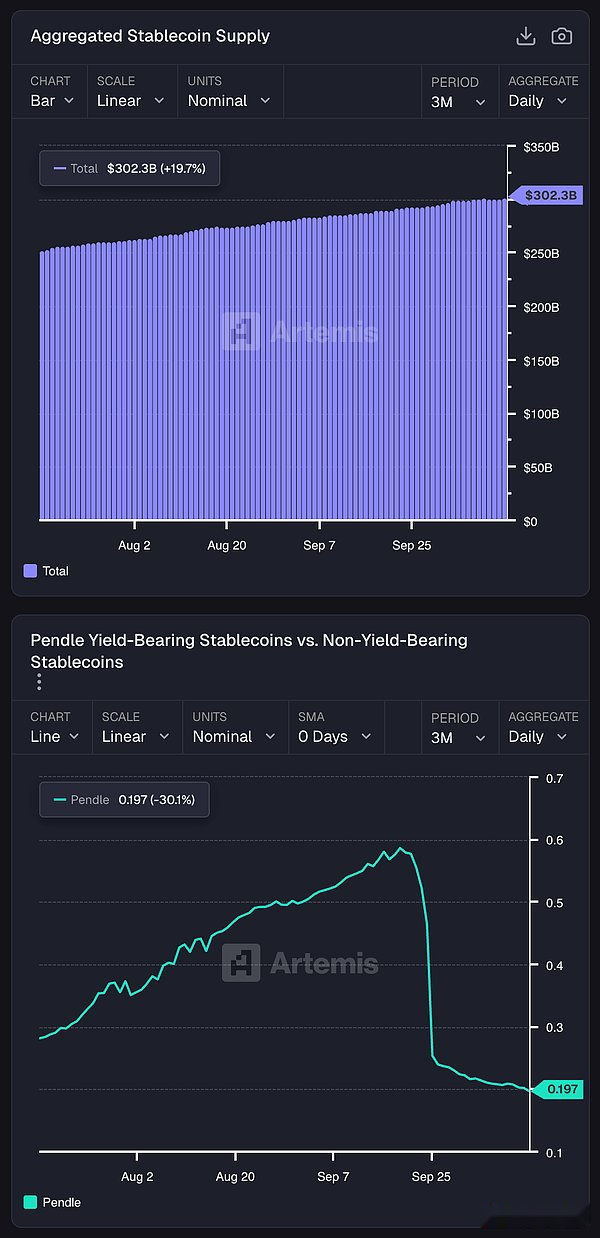
Stablecoins are a core pillar of Pendle’s growth.As the total supply of stablecoins exceeds 300 billion US dollars and the proportion of interest-bearing stablecoins increases rapidly, Pendle has become a key platform for tokenized transactions of such income-generating assets.By capturing the trend of users switching from passively holding stablecoins to actively earning income, Pendle is tapping into the largest and most stable liquidity base in the crypto space.This makes stablecoins the mainstay of its long-term TVL and revenue expansion.
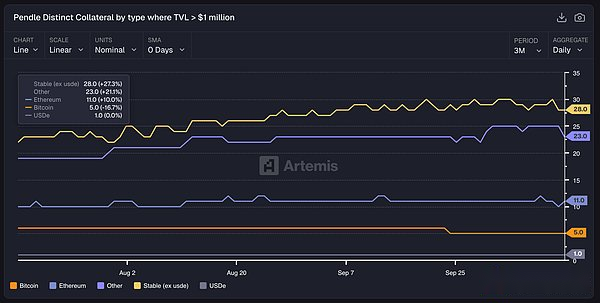
Pendle’s collateralized asset base has expanded significantly, with the stablecoin leading the way with 28 collateral types (+27%), underscoring its position as a pillar of the protocol’s growth.Ethereum (11 types, +10%) and other assets (23 types, +21%) continue to provide diversified support.This diverse landscape shows that Pendle is evolving intoMulti-asset income trading market, which can flexibly capture new narratives while always anchored by the reliability of stablecoins.


